- SEA LIFE Sydney Aquarium Tickets
- Sydney Opera House Tours
- Scenic World Tickets
- Sydney to Blue Mountain Tours
- Sydney Tower Eye Tickets
- Taronga Zoo Tickets
- Sydney Zoo Tickets
- WILD LIFE Sydney Zoo Tickets
- Featherdale Wildlife Park Tickets
- Madame Tussauds Tickets
- Big Bus Sydney Hop-on Hop-off Tours
- Skydive Sydney Tickets
- Australian National Maritime Museum Tickets
- Australian Reptile Park Tickets
- Hunter Valley Wine Tours
Best time for whale watching in Sydney | Tips for spotting these gentle giants
Best time for whale watching in Sydney
Each year, humpback whales travel thousands of kilometers from the icy waters of Antarctica to the tropical north to breed and then head back again. During their return journey, mothers swim south with their newborn calves, often staying close to the coast for safety.
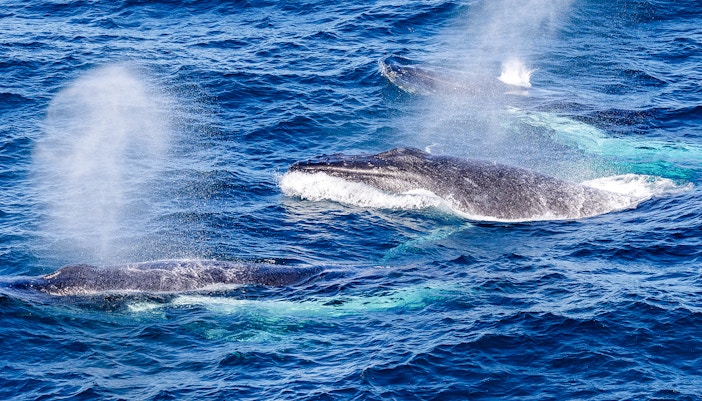
The prime window: June to July
If you want the best chance to see whales off Sydney’s coastline, plan your outing between mid-June and mid-July. This is when the northbound migration peaks, and the whales are moving fast and in large numbers. You’ll likely see them breaching, tail-slapping, and spouting right from the headlands or even closer, if you’re on the water.
Boat tours operate daily during this window, often departing from Circular Quay, Darling Harbour, or Manly. You’ll find everything from large cruise boats with open decks to small, fast inflatable vessels that can get you close to the action. Morning tours typically offer the calmest seas and the best light.
Plan your Sydney whale watching adventure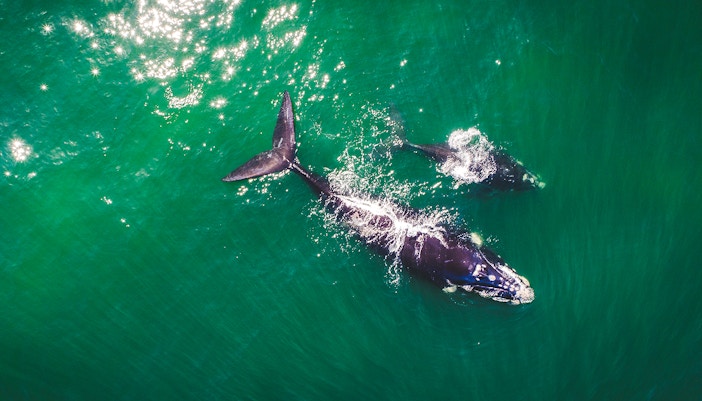
A second chance: Late September to early October
During the southbound migration, especially in late September and early October, mother whales return with their calves. This stretch is gentler and slower-paced. You might spot a mother guiding her calf through gentle tail slaps, playful rolls, or even witness a calf attempting its very first breach.
You don’t necessarily need a boat tour for this. Land-based lookouts like Cape Solander, South Head, and Barrenjoey Head often offer just as rewarding a view. Calves often stay close to shore, so with a bit of luck, you might spot one while simply out for a stroll.
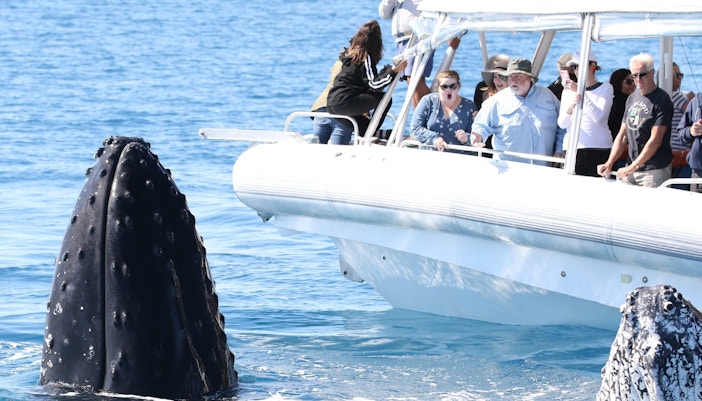
And if you’re really lucky...
August is the wildcard month. It’s when migrations overlap: some whales are still heading north, while others are already coming south. It’s also the peak of “mugging” season i.e., when curious whales approach boats and linger, sometimes circling or pausing just beneath you.
Choosing the right time of day
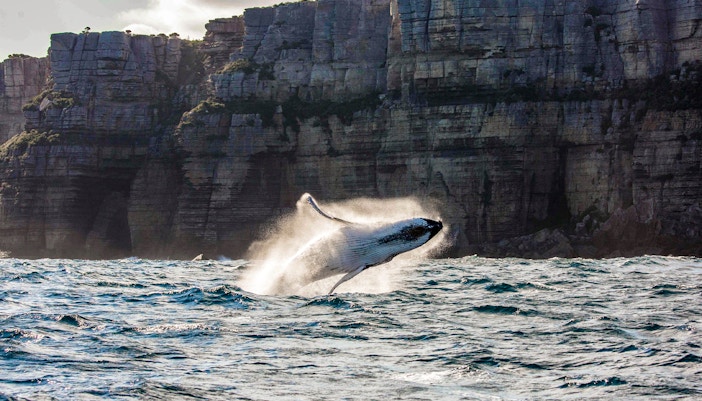
Early morning tours (7 am–10 am)
- Why it works: The sea is calmest at dawn with minimal chop—ideal conditions for both spotting whales and stabilizing small boat rides.
- What you’ll get: Soft, golden light perfect for photography and quiet, extended surface sessions by curious whales. Tour vessels, whether large catamarans or nimble inflatables, glide through smooth waters making them ideal for spotting a whale.
- Tour tip: Book a 2.5–3 hour cruise departing at dawn. Many include guided wake-up breakfasts or morning tea and offer rail-side seating on multi-level decks.
Recommended tour:
- Sydney Whale Watching Cruise with Onboard Buffet
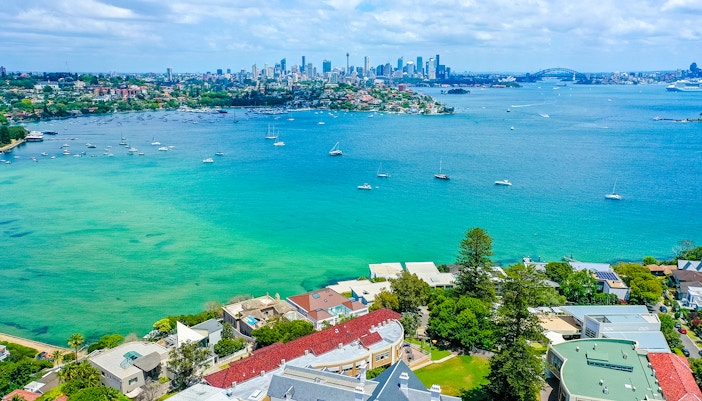
Midday cruises (10am–1pm)
- Why it works: It might get hot but the bonus is that the glare decreases.
- What you’ll get: Boats with buffet lunches cruise out for longer sessions. Expect on-deck commentary, interactive Q&A with marine biologists, and perhaps even a whale breach right off the bow.
- Tour tip: This is great for families. Warm midday temperatures, covered cabins, and onboard cafés help keep everyone comfortable.
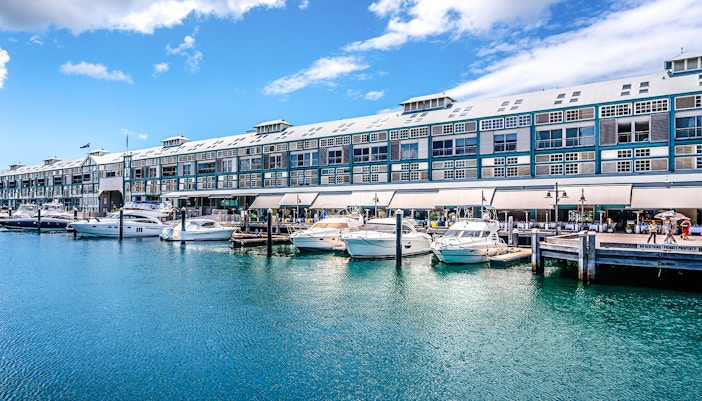
Afternoon & sunset cruises (1pm–4pm)
- Why it works: The sea often settles again, and late-afternoon light adds a silvery sheen to the water.
- What you’ll get: Dinner cruises featuring BBQs or twilight bites. It’s more relaxed and ideal for combining sightseeing with Sydney’s coastal sunset vibes.
- Tour tip: This is a quieter and more scenic option.
Frequently asked questions on best time for whale watching in Sydney
The season runs from mid-May to November, but peak activity near Sydney’s coast happens in June and July during the northbound migration—and again in late September to early October when mothers return south with their calves.
Morning cruises (around 9–11 am) are ideal—winds are lighter, seas are calmer, and visibility is better. Many tours are timed for this sweet spot, especially the smaller inflatable vessels.
No tour can promise a sighting. That said, June through July tours boast high success rates. Many operators offer a free rebooking if no whales are spotted.
Absolutely. Lookouts like Cape Solander, North Head, and Barrenjoey Head offer excellent, free vantage points. Calves often swim close to shore during the southbound migration in spring.
Primarily humpback whales. Occasionally, you might spot southern right whales, dolphins, minke whales—or even a rare orca pod passing through.
Drones must stay at least 100 m away from whales and fly above 30 m altitude. Breaching these rules can stress the whales and result in fines up to A$3,300.
Inflatable boats (RIBs) get closer to the whale and feel more adventurous, while larger cruises offer stability, comfort, and sometimes extras like onboard lunch or marine guides.
Dress in warm, windproof layers. Pack binoculars, sunscreen, a hat and bring your best self.
